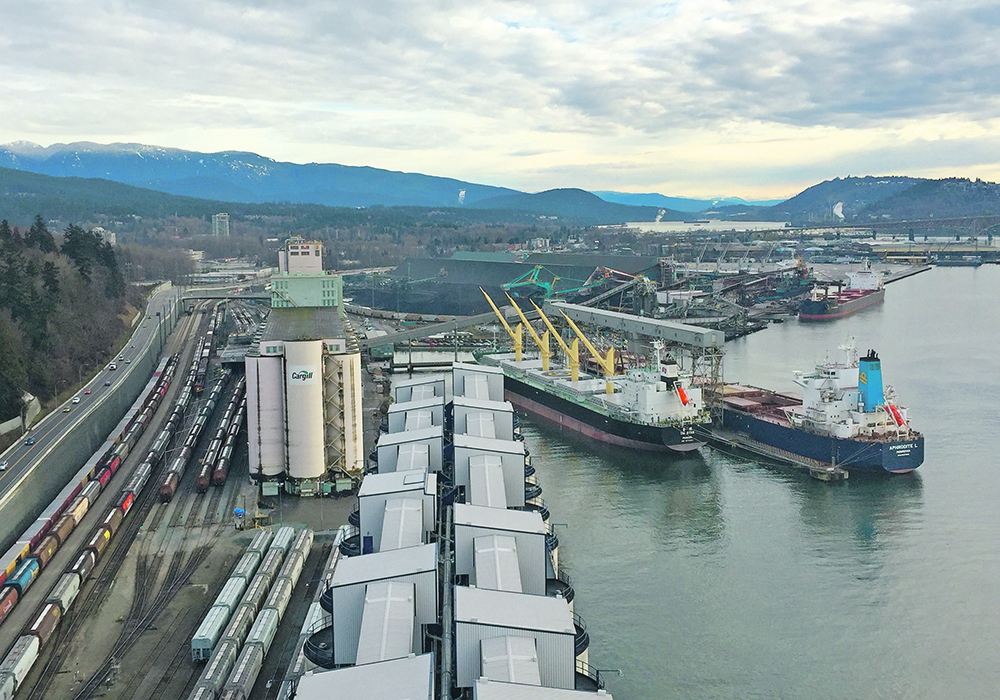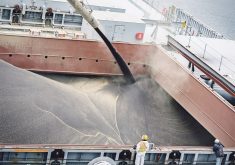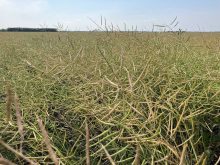Canada’s grain exports in the crop year that recently ended were strong and the numbers show a similar range of destinations as in recent non-drought years.
The numbers also show the primacy of China as a destination for Canadian crops and a concerning drop in the amount of canola exported to Japan.
Total bulk shipments from port and prairie elevators in 2022-23 were 45.98 million tonnes, according to preliminary numbers from the Canadian Grain Commission.
The CGC numbers cover 16 types of crops shipped in bulk from licensed CGC elevators. The CGC numbers do not capture all crop exports. Data on exports by container will be available next month.
Read Also

Huge Black Sea flax crop to provide stiff competition
Russia and Kazakhstan harvested huge flax crops and will be providing stiff competition in China and the EU.
The almost 46 million tonnes shipped last year was a big improvement over the drought year 2021-22 when only 29.15 million tonnes were shipped but less than the record year of 2020-21 when 50.79 million tonnes were shipped. The total was similar to the 44.26 million shipped in 2019-20.
China was the biggest importer, taking 12.77 million tonnes. That is almost 28 percent of all the crops shipped in the CGC report
No other country came remotely close to China.
The number two export destination was the United States at 3.2 million tonnes and number three was Japan with 2.95 million tonnes.
China was the leading importer of Canadian wheat, canola, barley, peas and soybeans.
It took 90 percent of the Canadian barley shipped, 61 percent of the peas, 58 percent of canola, 41 percent of the soybeans and 15 percent of the wheat, according to the CGC numbers.
The amount of Canadian crops that China bought was the largest ever, beating out the previous high of 11.5 million tonnes set in 2020-21.
Its purchases almost doubled the 6.6 million tonnes it bought 10 years ago in 2013-14.
I noted that Japan was the number three buyer, which was notable because it is usually the number two buyer of Canadian crops.
It imported a total 2.95 million tonnes, even less than the 3.25 million it bought in 2021-22, which was a poor year for Canadian exports because of the drought.
Generally in recent years, Japan buys more than four million tonnes of Canadian crops, and of that canola usually accounts for about half; in other words, two million tonnes or more.
But in the year that just ended, it bought only 1.04 million tonnes of Canadian canola, down from 1.42 million the year before and 2.28 million in 2020-21.
With the small Canadian canola crop in 2021, the price premium of canola over soybeans rose and Japanese crushers shifted to processing more soybeans.
While Canada had a poor canola crop that year, Australia had a bumper crop and again in 2022. This allowed Japan to turn to Australia for more product.
In fiscal year 2021, Australia exported 655,050 tonnes to Japan, up from 51,780 tonnes the year before.
From all sources, Japan imported 2.12 million tonnes of canola in 2021-22, 1.9 million in 2022-23 and is forecast to import 2.25 million in 2023-24. Those numbers came from the September U.S. Department of Agriculture Oilseed Outlook. The forecast was a decline from the 2.45 million tonnes in the August report.
The USDA attaché in Japan in April said the total vegetable oil market in Japan declined from close to 2.7 million tonnes in 2021-20 to an expected 2.5 million tonnes in 2022-23.
Of that smaller amount, the market share of soybean oil was expected to climb to 18 percent from 16 percent previously and canola was expected to fall to 41 percent from 42 percent previously.
Japan’s canola purchases in the current crop year will continue to vary depending on the price of canola compared to competing oilseeds and the availability of Australian canola.
Australia is experiencing a trying production year with periods of dry and warmer than normal weather.
Early this month, the Australian government forecast canola production in 2023–24 at 5.2 million tonnes, down 38 percent from last year, but still a large crop by historical standards.
Australia is experiencing a warmer than normal early spring, especially in the east. Recent rain in the West helped reduce crop stress.
The CGC numbers also show where grain was exported from in Canada.
Vancouver accounted for the lion’s share with almost 60 percent of total crop exports moving through its terminals.
Almost 10 percent was shipped through the northern port of Prince Rupert, B.C.
Ports on the St. Lawrence Seaway accounted for 16 percent of total exports.
Bay and lake ports that handle a lot of Ontario grain accounted for 4.4 percent percent of exports. Thunder Bay accounted for three percent of Canadian exports, but it is also the transfer point where lakers are loaded to sail on to St. Lawrence ports.
Exports from prairie elevators accounted for 6.75 percent.

















